How to Learn from the Best in Your Niche in SEO | LowFruits Domain Explorer
Georgi Todorov

What type of websites should you be studying for SEO Keyword Research?
In SEO, learn from successful low-DA sites instead of just high-DA ones.
Focusing on these underdogs can improve your strategy and find new opportunities in your field.
Identify these low-DA winners in your niche using LowFruits’ Domain Explorer, a database of ‘weak’ domains (DA less than 25) that still attract a significant audience with easy keywords.
In this article, we’ll review travel and finance niches using the tool. These industries are tough to rank and drive traffic in. Let’s get started!
How To Do Competitor Analysis in the Travel Niche
Our journey starts at LowFruits’ Domain Explorer.
Note: The Domain Explorer & Ranking Extractor are subscriber-only features. They are not available as part of our freemium or credit-based system.
Step #1: Travel Location
For the travel niche, that’d usually be a country or a city.
I’d like a challenge, so I’ll input ”Paris” as the main topic.
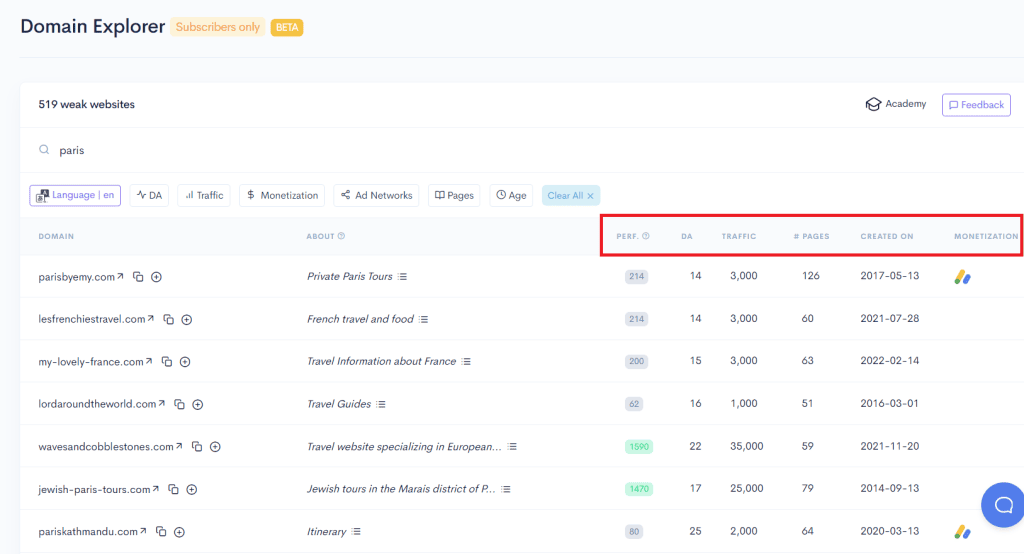
We have 519 weak websites with DA<25 with noticeable traffic.
We can see their domain authority, traffic, and number of pages they have.
We can also see their monetization channel (e.g., Google Ads and Amazon Affiliates).
Step #2: Filter by ”Performance” to find sites with highest scores
After that, you want to filter by ”performance” – that is how much traffic they have divided by their domain authority.
The higher the score, the better.
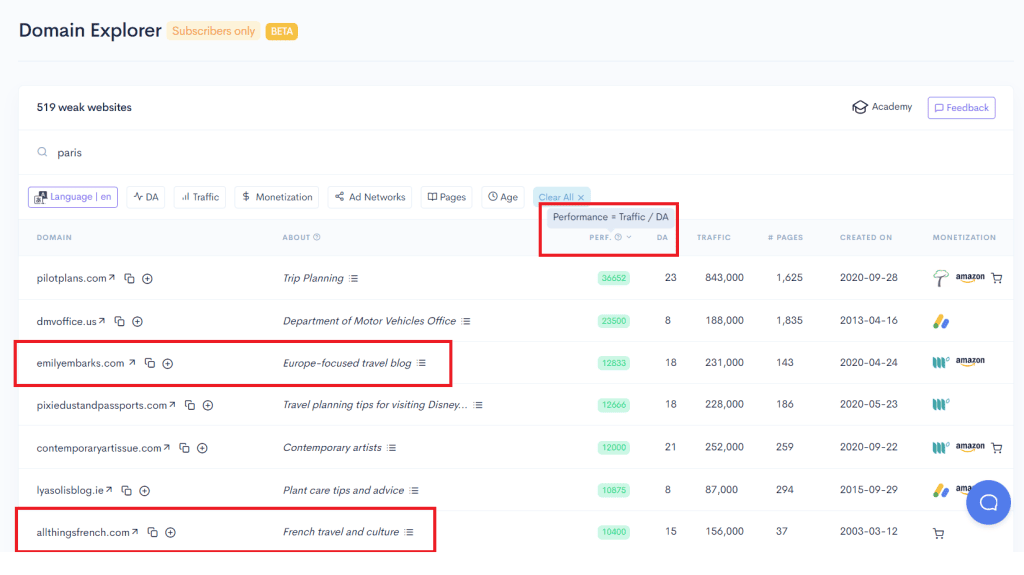
These are the ”weak” websites pulling in hundreds of thousands of traffic around the travel niche (that also write about Paris).
Now it’s time to see who resembles us. We are a blog that wants to do some affiliate marketing.
We can see the 2 websites that look like us – Emily Embarks and All Things French.
Some of these websites will not be *only* about Paris. These could be bloggers in the travel niche who write all things Europe.
Emily Embarks is a European-focused blogger who pulls out 231,000 organic traffic for her 18 DA website with 143 pages.
We will also pick up the 2nd website to research, All Things French, that have good numbers as well with its 37 pages that focus on France.
Step #3: Use LowFruits’ Ranking Extractor
Next up, we head up to LowFruits’ ranking extractor.
You want to put the domains of the winners who are just like you.
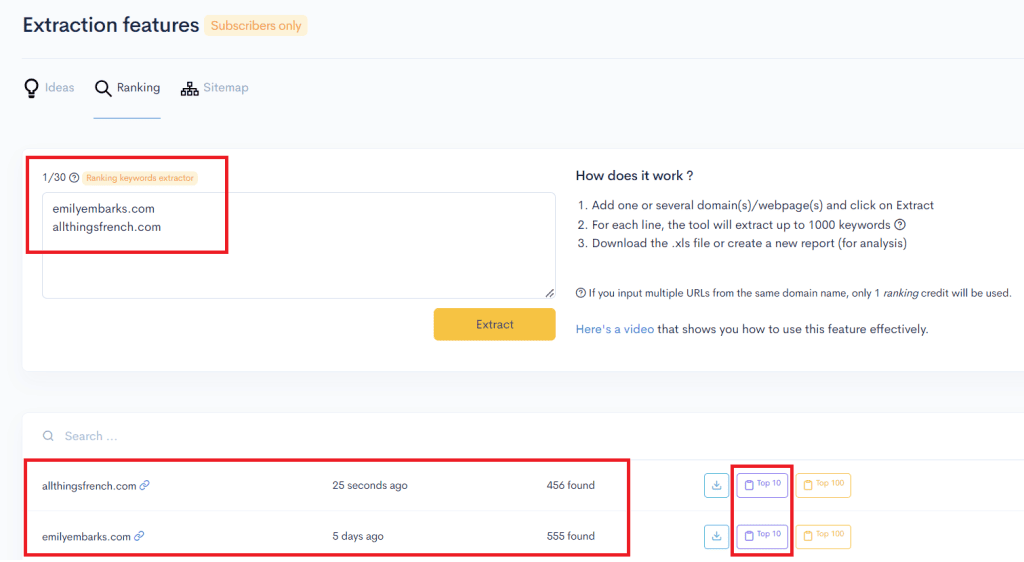
After that, you want to export their rankings.
These are the keywords that they are currently ranking for while having a low DA.
Step #4: Filter in Excel & check which keywords to go after
When you export the keywords in Excel, you want to do the following basic filters:
- Filter by the name of the topic (in our case, Paris)
- Filter by the position – starting from the keywords they are ranking the best for
I’m not really sure about All Things French as a website because it has too few pages, so I assume it might not be the kind of blog that we want to become. This is why I will examine it separately from Emily Embarks
And upon closer examination, we can see that All Things French is not for us in our pursuit of keyword ideas for Paris.
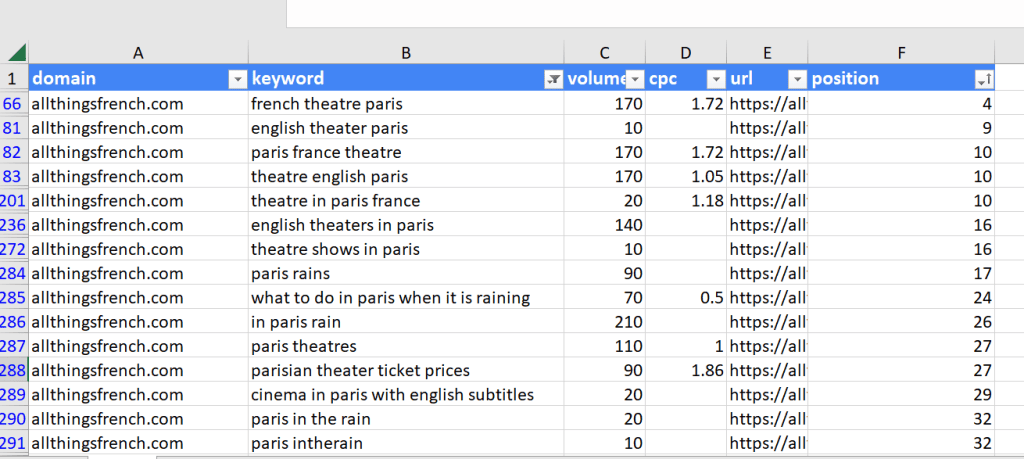
They are not ranking very well for Paris-related keywords, and those that do are content around theaters and rain. We will ditch this keyword list.
On the other hand, Emily Embarks ranks pretty well for Paris-related keywords. In fact, this website is taking an interesting topic strategy.
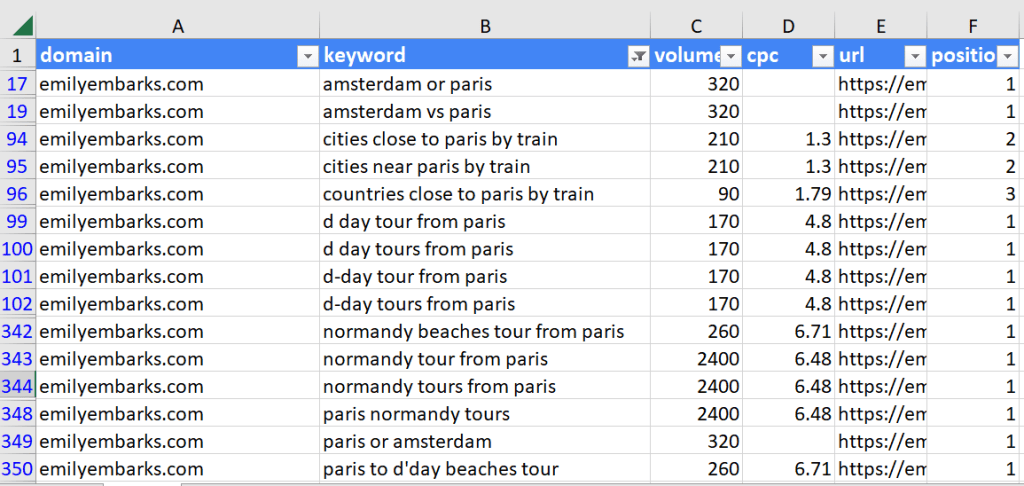
They go after comparison keywords, such as ”Amsterdam vs. Paris” and content around daily tours and cities close to the city.
The big established players would not write about this type of content when there is so much demand for them.
Step #5: Select keywords that make sense
Take note of the keywords that sense for your blog so you can import them into LowFruits.
We were able to snatch 18 keyword ideas from Emily Embarks.
As a final check, we want to see which keywords are really easy and something we can look into.
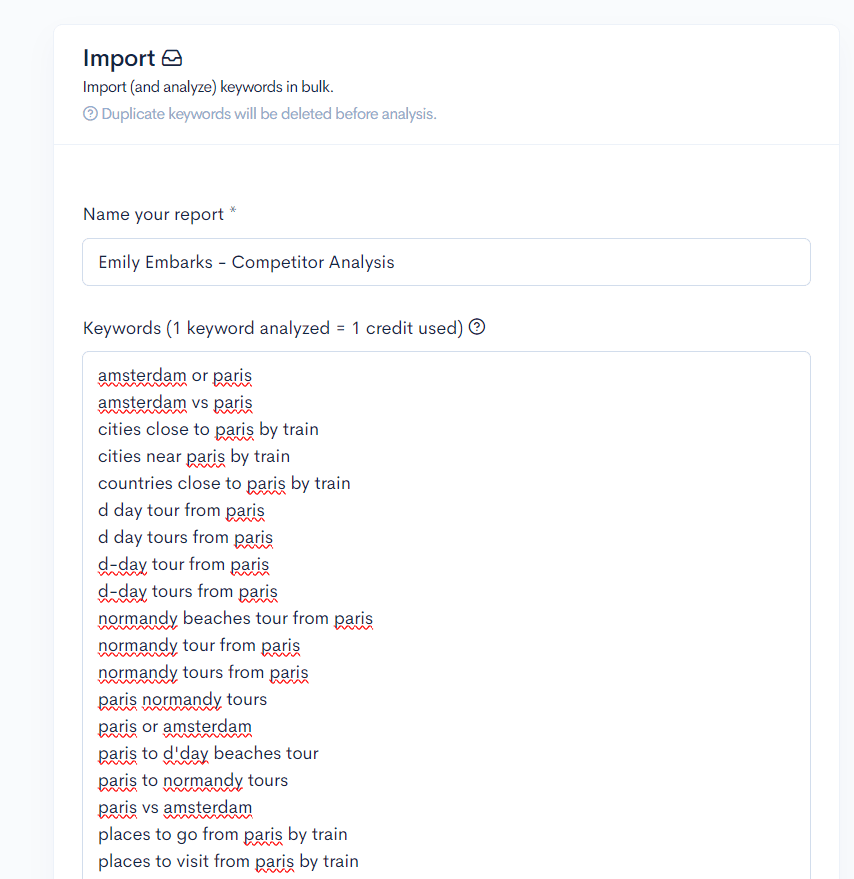
Naturally, some of these keywords would not be easy to go after just because 1 low DA website is ranking well for them. This is why we want to final check whether these are easy keywords.
We can see that some of these keywords have plenty of weak competition ranking on the 1st page.
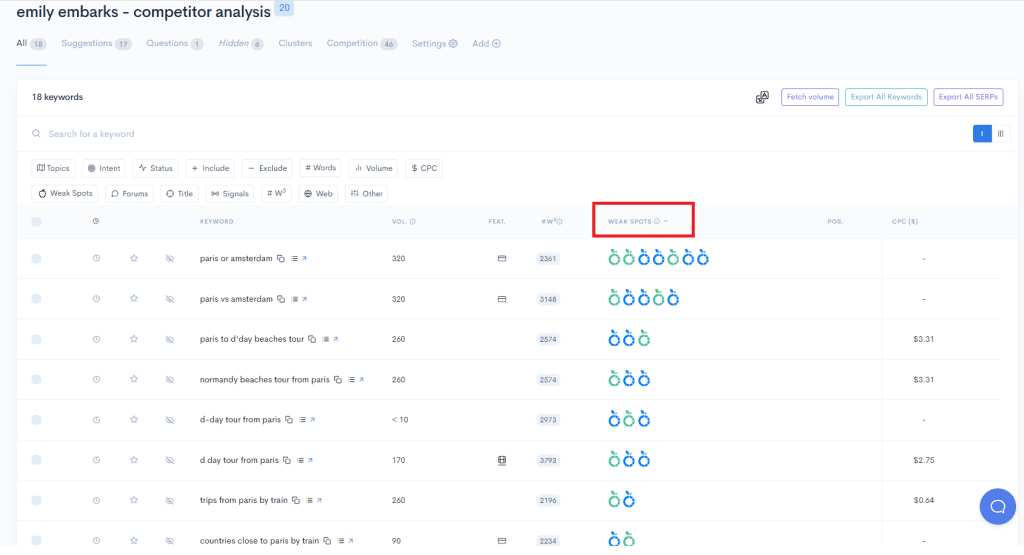
Blue fruits: user-generated content and forums (e.g., Reddit) ranking on 1st page.
In the end, we were able to narrow it down to 15 keywords that we can go after for Paris from analyzing the winner of our niche.
If I wanted to get 10-15 more, we’d need to repeat this process using another Paris-related competitor, since All Things French didn’t turn out to have good rankings on Paris-related keywords.
How To Do Competitor Analysis in the Finance Niche
In order to solidify the process, let’s go for an even harder niche than travel: finance.
Our process starts again at LowFruits’ Domain Explorer.
Note: Repeating for those who jumped to this section, the Domain Explorer & Ranking Extractor are subscriber-only features. They are not available as part of our freemium or credit-based system. They are low cost SEO tools that can help you steal your competitors’ keywords.
Step #1: Finance topic
In this example, we will be exploring the Crypto finance niche.
Begin by inputting ”crypto” into LowFruits’ Domain Explorer.
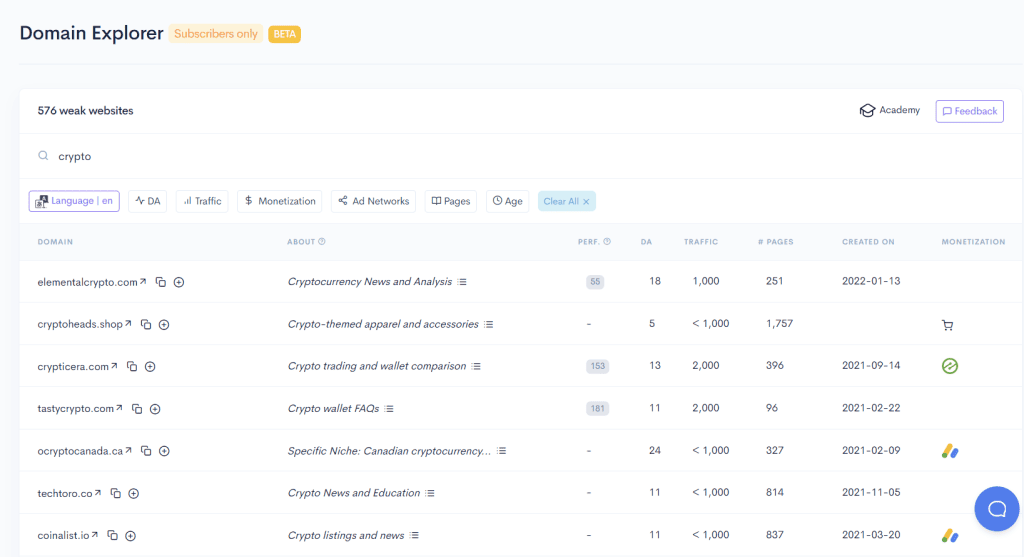
For those of you who jumped straight into this topic, in this section we can see:
- What these websites are about – we want to focus on the websites that are just like us
- The performance score (traffic divided by DA)
- The domain authority (DA) of the websites
- Their organic traffic per month
- The number of their pages
- When the website was created
- Their monetization channels – such as Ezoic, Google Ads, or Amazon Affiliate
Step #2: Filter by ”Performance” and check out who have the highest scores
The next step is to filter by ”performance” – these are going to be the websites that have the highest organic traffic for their ”weak” domains.
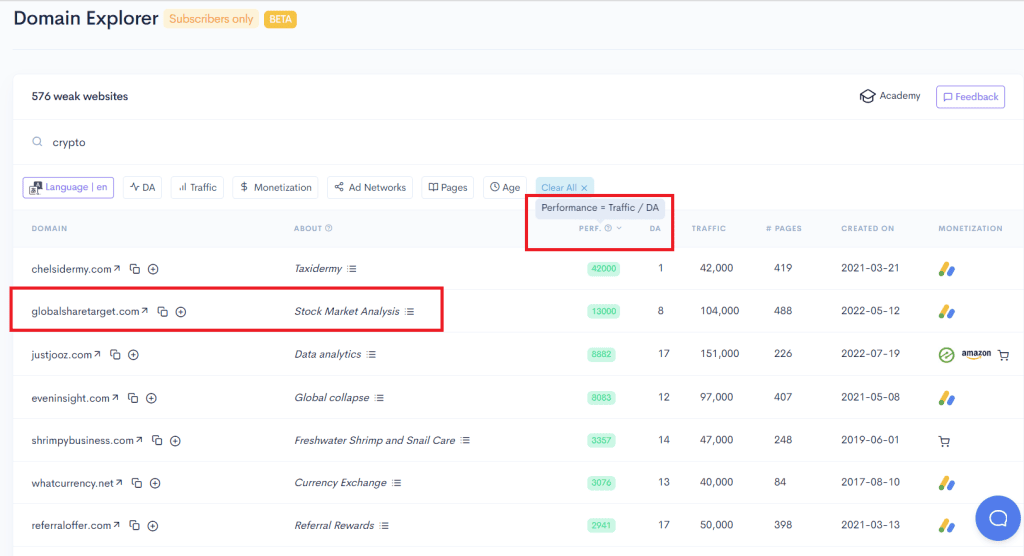
We can see that there are websites that are about all things finance, and even a shrimp and snails website. Seems like plenty of websites write on the crypto topic.
For diverse topics like crypto which plenty of websites cover, from news channels to currency exchange websites, we want to look for websites that are just like us.
So far we have found Global Share Target to be like us (blog on finance analysis), so let’s continue digging by scrolling down.
For every website that we are interested in, we will click on the little ”plus” icon that we want to add this domain to the extraction list that we will go to after.
As we scroll down, we are able to identify 3 more blogs that cover crypto that look like us:
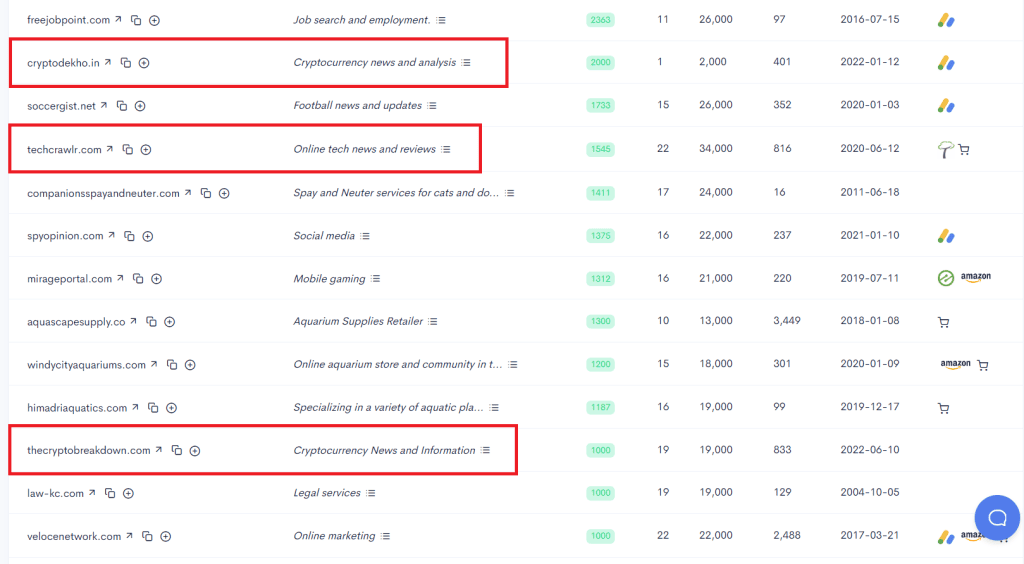
Step #3: Input their domains into LowFruits’ Ranking Extractor & Export Their Rankings
We’ve got 4 competitor websites in the crypto vertical that have low domain authority but are pulling out thousands of organic traffic per month.
The next step is to find out what keywords they are ranking for in the crypto niche.
You want to input all of their domains at once (unless they are already there from adding them with the ”plus” icon) and then we will get their keyword rankings at once.
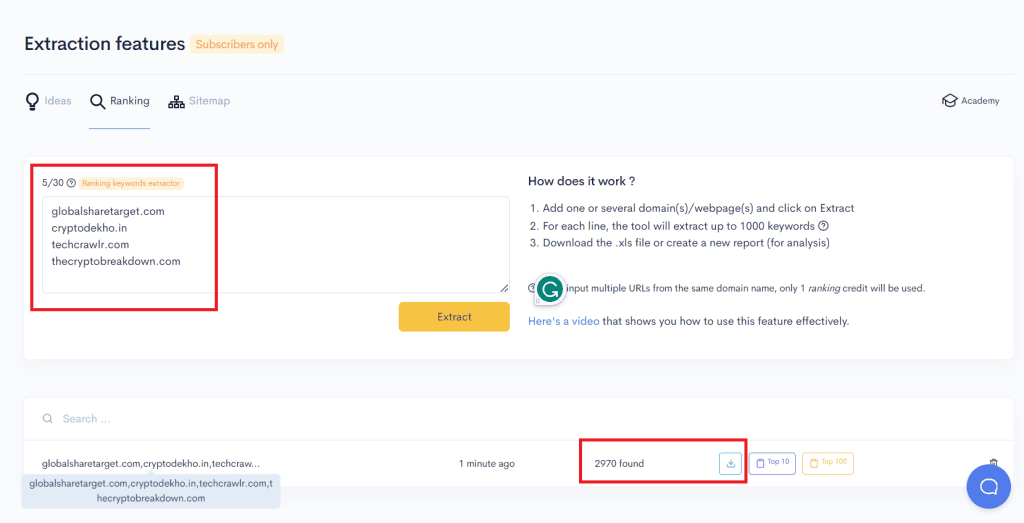
After that, you want to export their rankings at once.
The good thing about LowFruits’ Ranking Extractor is that we do not need to combine and de-dupe the keywords from the 4 competitors because the tool is already doing that for us.
These are the keywords that these blogs currently ranking for in the finance niche while having a low DA.
Step #4: Start filtering in Excel & check if these are keywords you would want to go after
Naturally, not all of the keywords of these competitors are going to be about crypto-related.
This is why we don’t want to assume that we have 3,000 crypto keyword ideas.
The next step after we export the keywords is to do some Excel magic:
- Filter by the name of the topic (crypto)
Filter by the position – starting from the keywords they are ranking the best for
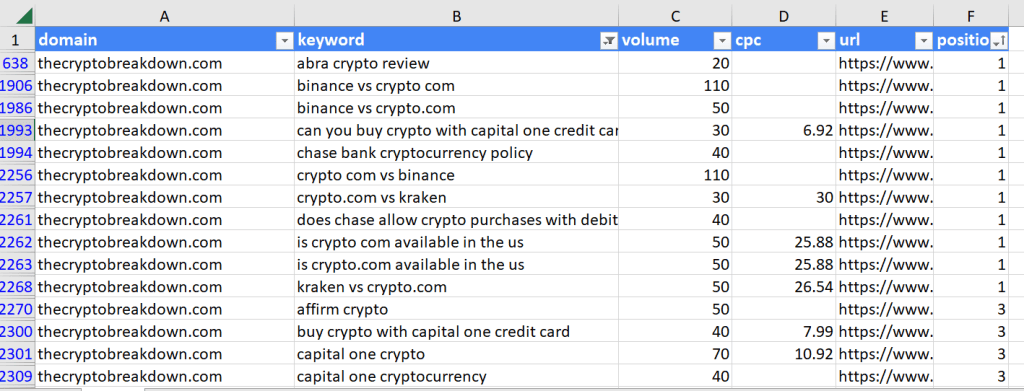
We were able to get around 200 crypto-related keywords from these 4 websites, and we can see that The Crypto Breakdown is getting the spotlight with their comparison keywords and crypto-related questions.
Step #5: Note down the keywords that make sense for your blog and import them into LowFruits
Out of these 200 crypto-related keywords, not all make sense for us.
For example, out of the keywords that we were able to snatch from Tech Crawlr, none of them seem to make sense for us.
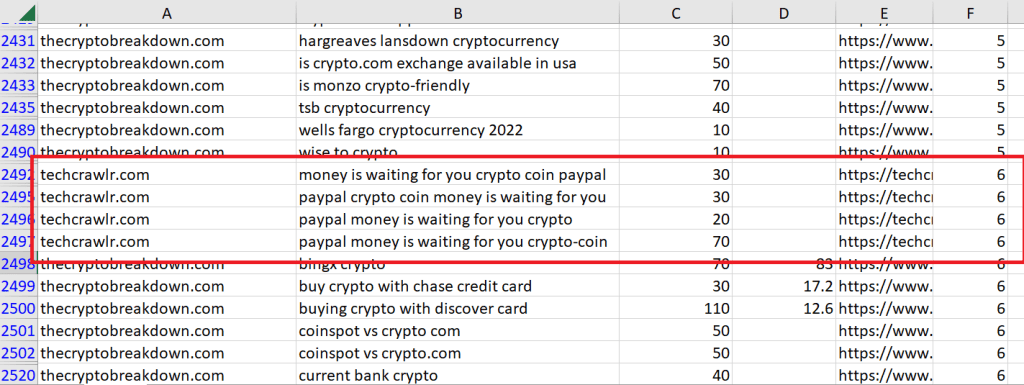
This is why we are going to remove the keywords that do not make sense for us before we analyze them at LowFruits.
After we are done and we narrowed it down to 63 keywords, the next step is to import the final keywords list into LowFruits.
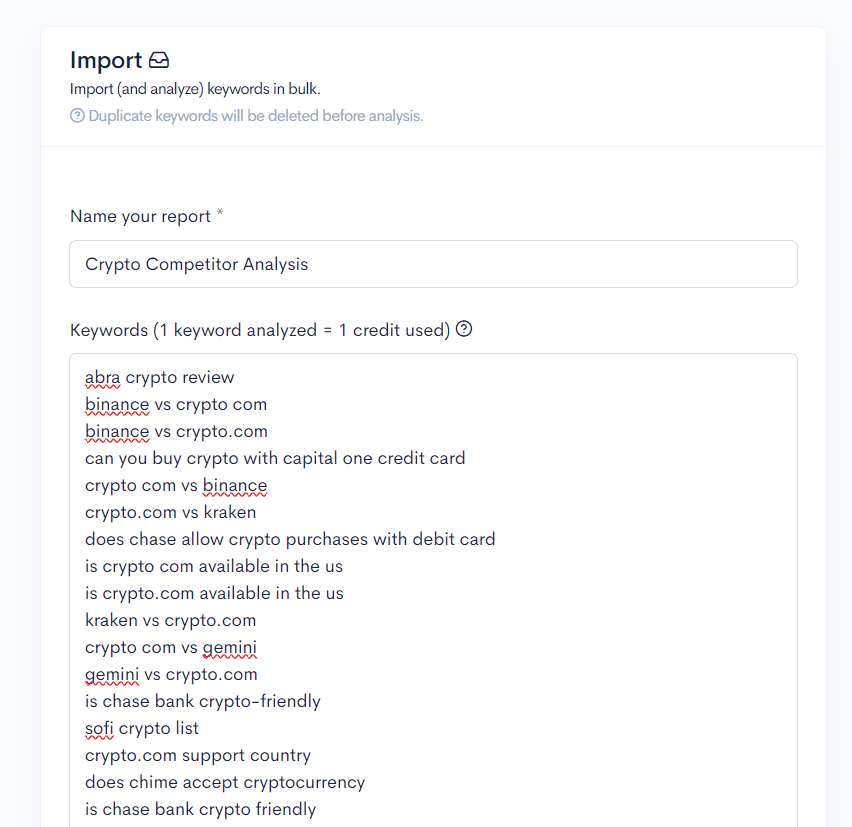
We want to analyze the keywords to see if they are really easy.
As expected, some of the keywords really do have weak domains ranking on the 1st page for them.
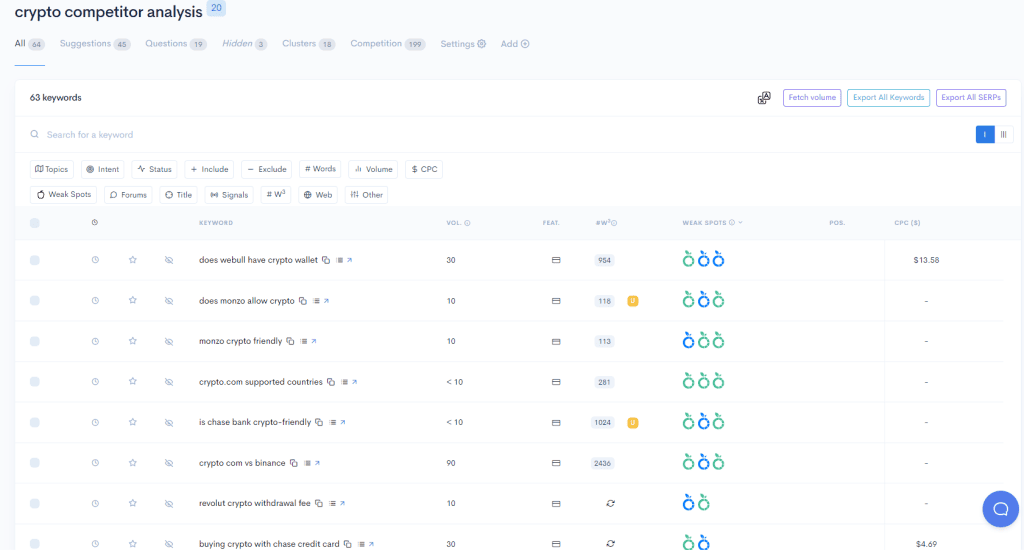
But, on the other hand, some of these keywords are not ones that we want to go after.
For example, the keywords that have only 1 weak domain ranking on the first page would still be hard to rank for them, and if they have low search volume, it would be quite the effort for little to no traffic potential.
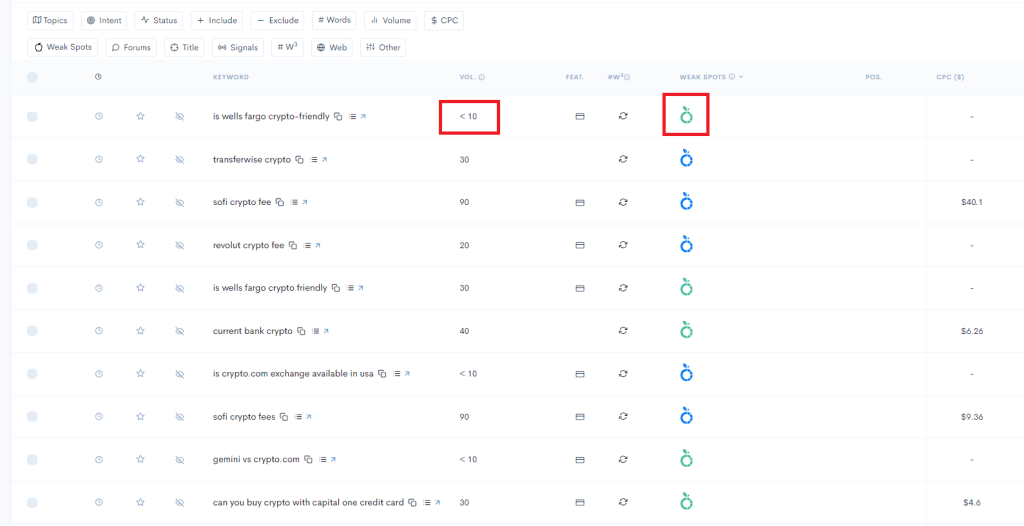
This is why we will focus on the 20 keywords that have at least 2 weak domains or user-generated content (such as Reddit) ranking on 1st page for it, so we can have a more realistic chance to rank for them and get a good traffic share.
And if we wanted to get even more keyword ideas, we would need to repeat this process with 4-5 more competitors who are just like us but are getting massive amounts of organic traffic.
Conclusion & Key Takeaways: Studying the Winners
- We should study the competitors who are the successful version of us – low DA, relatively new domain, but getting massive amounts of organic traffic
- We can study the big players for things like content quality and conversion rate optimization, but there’s no point targeting their keywords because they are more likely to target higher-difficulty keywords
- You can find out who are the ”outliers” of your niche by inputting your niche topic into LowFruits Domain Explorer and looking at weak domains that are getting massive organic traffic
- Do not forget to look at the ”About” section – you want to be sure that these are websites that cover your niche
- Extract the rankings of those strong competitors to see what keywords they are targeting and filter down in Excel to see which topics you would be interested in pursuing as well
- Double-check if these are really easy keywords to go after with a tool like LowFruits where you can extract the SERPs of these keywords and see if there are low DA websites ranking for it on 1st page
- You can repeat this process with multiple competitors before getting a complete list of keyword ideas to go after
seems like a decent strategy, the key is knowing how difficult the keyword will be to rank, you’re relying only that your low DA competitor ranked for it but that might be short sighted.
Bonjour,
C’est vraiment intéressant !
Pour un e-commerce, comment ça fonctionne pour des requêtes produits dont les pages de résultats affichent uniquement des sites e-commerce ? Et la plupart du temps soit des pages de catégories, ou des pages produits ?
Je demande cela car il n’y a pas forcément beaucoup de choses à dire dans ce cas, et donc je me demande comment on peut parvenir à de bons résultats avec votre stratégie ?
Il y a bien les liens internes entrants et les liens externes entrants, mais ça ne suffit généralement pas.
Merci,
Olivier